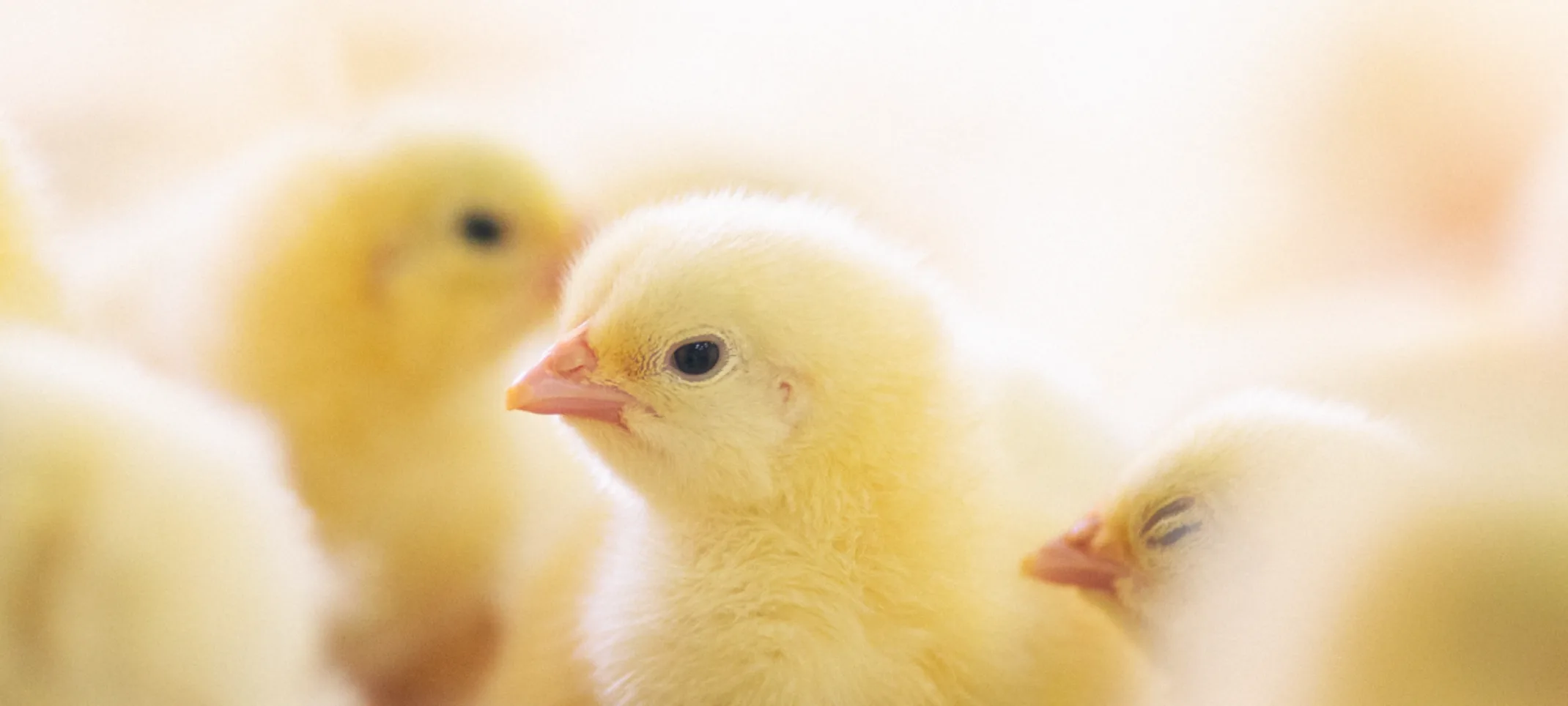Bowmanville Veterinary Clinic
I Found a Baby Bird
How to identify birds and help them.

I Found A Baby Bird...How Can I Help?
What kind of bird have I found?
Baby birds fall into two general categories based on how developed they are when they hatch. These two categories are altricial and precocial.
To determine how to help the baby, the first step is to determine which of these groups it belongs to.
Altricial - Altricial birds are naked or have only sparse down when they hatch. Even once their feathers have grown in, babies often have patches of skin visible. Many altricial babies open their mouths for food, and they can’t move around well until they are feathered. All songbirds are altricial.
Hawks, owls doves, crows, woodpeckers and herons are also examples of altricial birds.
Altricial birds stay in the nest for 1-3 weeks. When they are strong enough to jump around, they leave the nest, often before they can fly! Their parents feed them both in the nest and for a period of time after they have left.
Precocial - Precocial birds hatch fully covered with soft down and are walking or running within hours of hatching (usually within a day or two) and then follow their parents around on foot or in the water for a number of weeks.
Examples of some common precocial birds are geese, swans, ducks and killdeer. Precocial baby birds can eat on their own and do not depend on their parents to feed them. However they do need their parents to keep them warm at night, to act as role models, and to protect them from predators.
How to help precocial baby birds - Precocial birds remain in the care of their parents at all times until they have adult feathers. It would not be normal to find, for example, a downy duckling or gosling waddling around by itself. A parent should be very close by at all times, protecting its baby from predators. If you have found a precocial baby bird and no parent is in sight (or none that seems to be watching out for the baby), place the baby in a box in a warm, dark, quiet place and contact a wildlife rehabilitator. It is very important to get the baby to a rehabilitator quickly and not to play with it in the meantime, as even a small amount of direct exposure to people can be harmful to precocial babies and impair their ability to survive in the wild.
How to help altricial baby birds - There are many altricial species, but songbird babies are the ones more commonly found by people. Babies of all of these species are no bigger than a tennis ball (and some much smaller), and usually gape their mouths open for food when approached. Call a wildlife rehabilitator for further advice if you have found an altricial baby bird that has: a) a body that is bigger than a tennis ball, or b) a body completely covered in fine yellow or white hairs, or c) a sharply hooked beak, or a beak longer than its head
If you find a warm, unfeathered or sparsely feathered baby bird on the ground that does not appear to be sick or injured but cannot hop around on its own, it is probably a NESTLING. If you definitely know which nest the baby originated from and you can do so safely, replace the baby in its nest. The nest will probably be directly overhead or very nearby, and should have identical siblings in it. If the nest has been destroyed, but you know where it was, make a new one! Use a large clean margarine tub with a few holes poked in the bottom, or a berry basket, with dry grass packed tightly inside it to form a cup shape. Tuck the babies into the nest so they are sitting upright. Place the new nest out of direct sunlight, in the same location as the original nest. This will allow the parent birds to locate their babies. Thread some wire through the holes on the bottom of the container and twist it around the tree branch or other surface to hold it in place. Parents WILL accept babies that have been handled by humans, but try to minimize handling anyway. Do not feed the baby anything, or give it water. Watch from a distance to make sure a parent comes to feed the baby within 1-2 hours.
Not all birds nest in trees!
European Starlings, for example, build their nests in crevices, such as inside a roof or exhaust vent of a building, or even a hydro box or a lamp pole. One of the most distinctive traits of baby starlings is that the insides of their mouths and sides of their beaks are bright yellow.
If you find a nest of starlings that as fallen or been removed from its original location, you can build a false nest using a clean 4-litre jug with a 9cm x 9cm square cut out of the front (leave the top side of the square attached and bend the cut flap outward to form an awning under which the parent can perch). Poke small holes in the bottom and the sides of the container, then tuck the nesting material and babies snugly inside. Hang the bottle in a shaded area over top of the original nest entry point and watch from a distance to make sure an adult bird is returning to feed the babies.
They go around on the ground: Babies that have already left the nest are called FLEDGLINGS. Fledglings are fully feathered but will have a short stubby tail (relative to the adults of the species), and sometimes have little tufts of down sticking through their feathers. They also often have yellow or white skin along the side of their beaks and will open their mouths for food. You may see them on the ground hopping around or fluttering their wings. Fledglings often leave the nest before they are able to fly. The parents feed then frequently and care for them on the ground and in areas surrounding the nest. They are vulnerable at this time, but this is an important stage in their development, and they need to stay where they can receive their parents’ care. You can help them to survive by keeping cats indoors and dogs on a leash.
Are the parents caring for their baby? If you have found a fledgling bird and you are concerned that it may be orphaned, a good way to test if its parents have been caring for it is to see if it is pooping normally. Parent birds feed their babies frequently and as a result, a healthy baby bird will poop often. If the bird poops within one hour of when you find it and the feces has both white and dark colours in it, then it has been fed recently by its parents and should be left where it was found, unless the area is so dangerous that the parents cannot return to feed the baby (such as the middle of a highway). You should not feed a baby bird without talking to a wildlife rehabilitator, and if you have fed the baby, this will not be a reliable test. If you have fed it, return the baby to where it was found and watch from a good distance away for one hour to see if the parents return to feed the baby. Be sure to watch constantly as parents can feed the baby and fly away quickly. If no parents return, or the baby is not pooping or its poop is all white, contact a wildlife rehabilitator for further advice.
Warning Signs & How To Help
How to tell is a bird needs help - If the baby appears to be sick or injured, do not try to reunite it with its parents. Watch out in particular for these signs:
The baby has been picked up, played with or attacked by a cat (you should assume the bird is injured even if it looks fine).
It is fully covered in feathers but cannot stand up or is falling over
It is keeping its eyes closed most of the time
It is sitting in an exposed area (like the middle of a sidewalk) for long periods of time, not avoiding people or not trying to hide
If the baby does need help - If you think a baby bird is injured, sick, or orphaned, put it in a box. Put the box in a warm, quiet, dark place. Do not give the bird anything to eat. Altricial baby birds depend on their parents to give them the right food so babies will usually eat whatever is put in their mouths, even if it is the wrong food for them. The wrong foods or improper feeding techniques can cause a lot of harm.
Never put water or other liquid in a baby bird’s gaping mouth, as babies easily inhale liquid, which can cause serious illness.
Call a wildlife rehabilitator immediately for further instructions. Baby birds need professional care, proper socialization, and frequent feedings of appropriate food. Trying to raise baby birds without proper training can be very harmful to the baby, and is against provincial and federal laws.
Other Ways To Help
Spread the word. Let your neighbours know about nestlings and fledglings.
Avoid using pesticides, especially in the spring and summer.
Try to avoid trimming trees and bushes between April and September, as this can disturb nests. It is against the law to disturb nesting birds.
Keep your cat indoors. Cats are the #1 cause of injury to altricial baby birds.
Donate to or volunteer for a wildlife rehabilitator to help care for sick, injured and orphaned birds.
